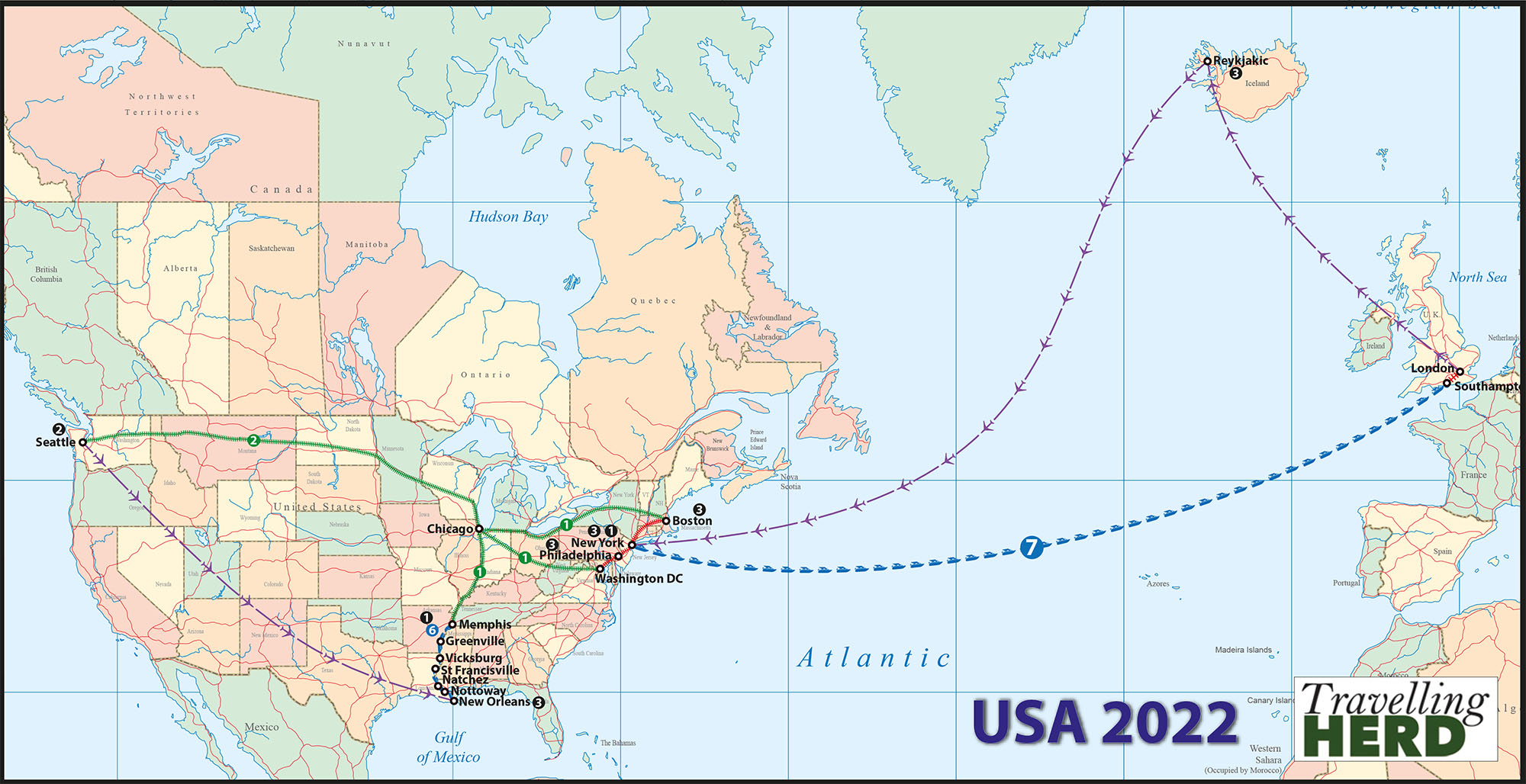Friday 20th to Monday 23rd May 2022
The hop-on-hop-off tour for the day was to Vicksburg but since we could see the first stop from the boat we decided to walk straight there. This time we seemed to avoid the crowds by being the only people who were choosing to visit the Old Depot Museum.
To give the building it’s full title, the Yazoo and Mississippi Valley Railway Depot was built in 1907 at a cost of $60,715. At that time it was the busiest railway station in the state and 22 passenger and freight trains passed through every day.
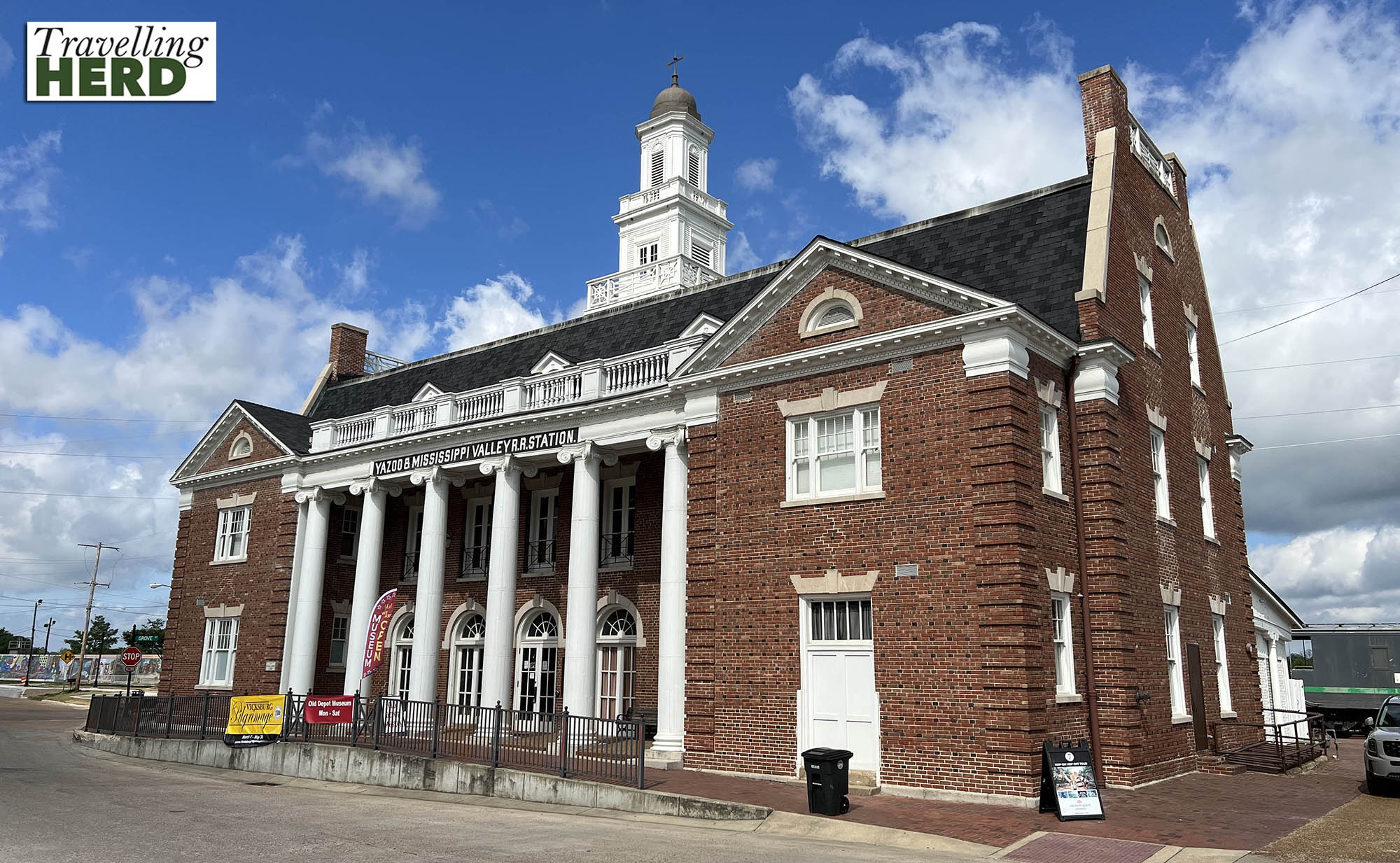
Now it is a museum housing model railways and railway artefacts as well as a diorama of the Siege of Vicksburg. Inside we were welcomed by a fellow rail enthusiast who may not have had many visitors for some time and who took us through to the exhibits. He had two hand held devices which Matilda thought initially were to count visitors but in fact he turned each model railway on remotely as we walked round the room so that we always had trains in motion to attract our attention.
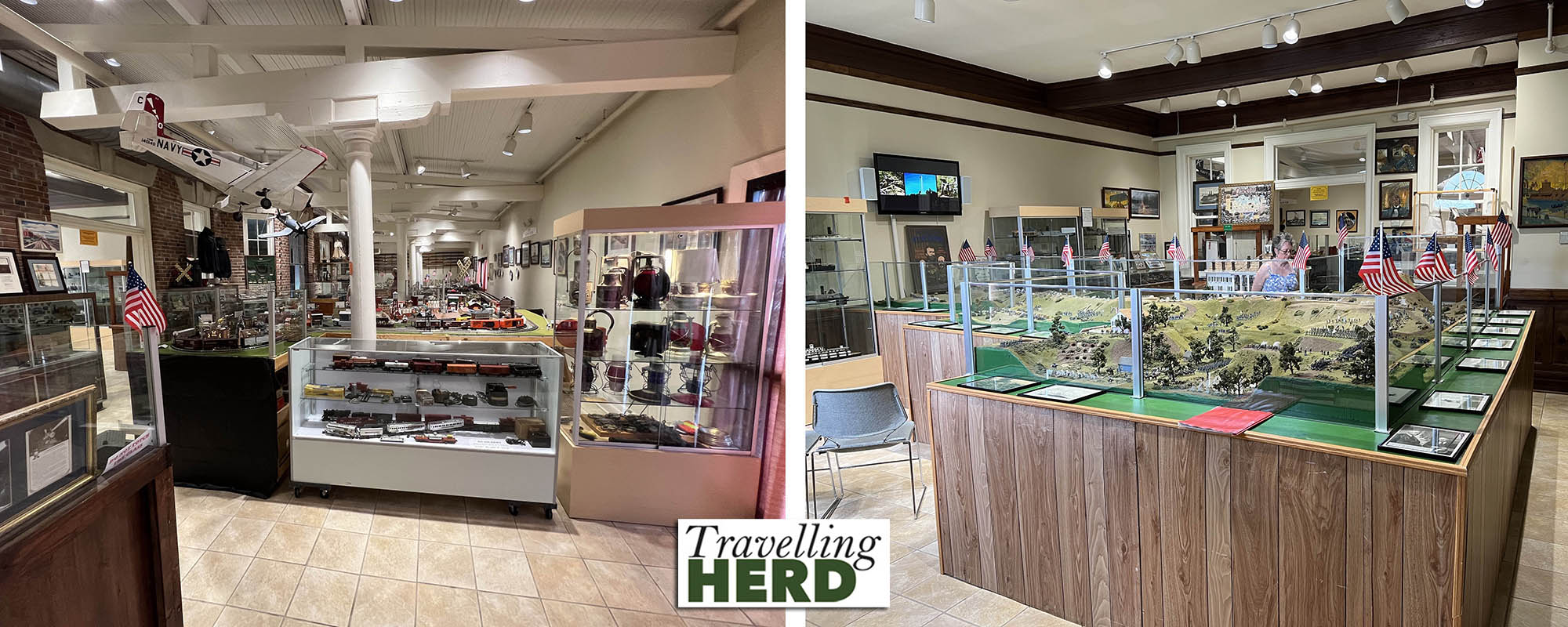
The exhibits included maritime models and we were surprised to find a scale model of the Cutty Sark there – the world’s only surviving extreme clipper, she was the fastest boat of her time and is now kept in dry dock in Greenwich.
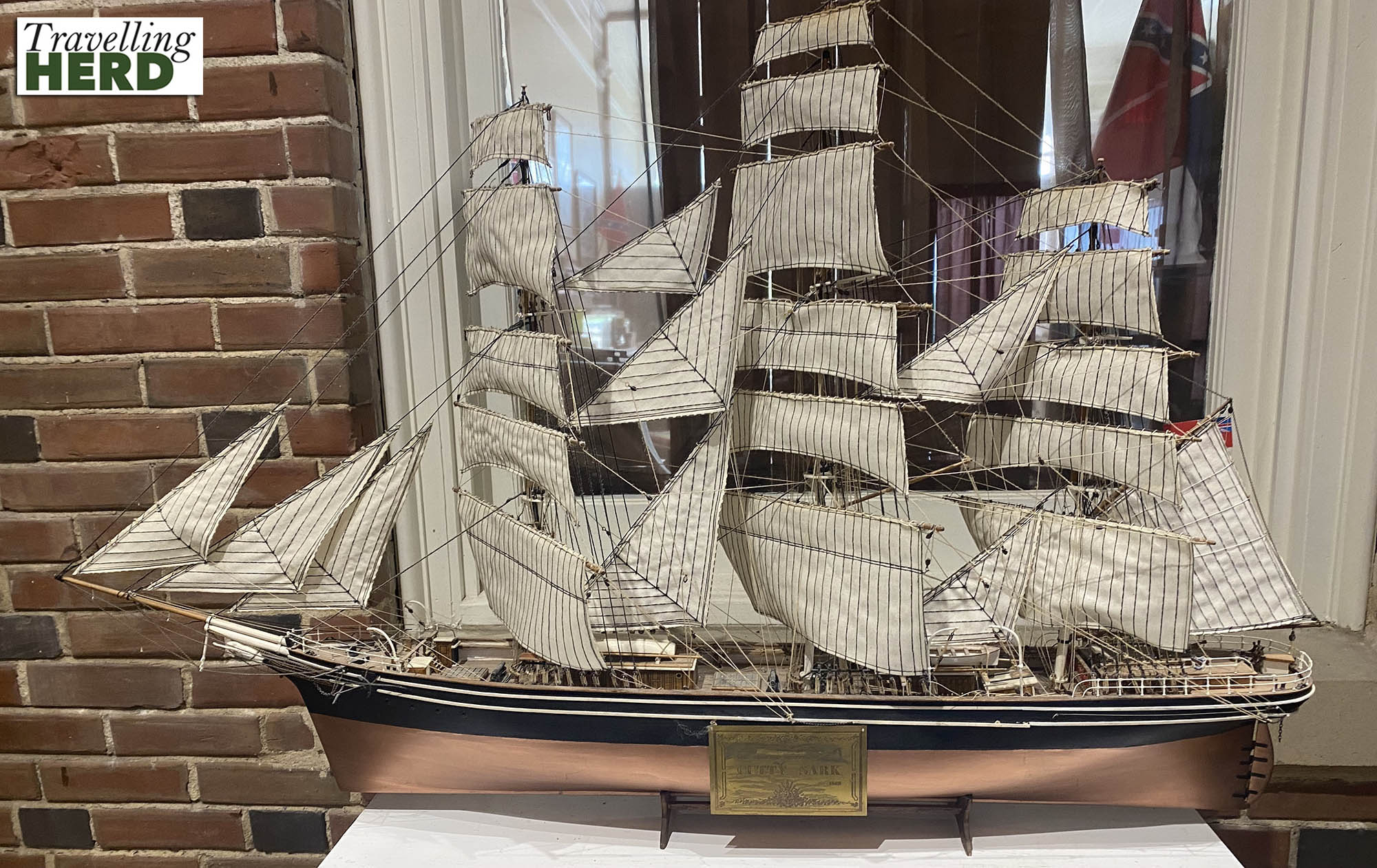
We walked to our next stop at the Biedenharn Coca-Cola Museum, in the premises where Coca-Cola was first bottled in 1894. We are so used to seeing it available in bottles or cans that we had not realised that initially it was available only as a syrup to be added to drinks at soda fountains. The exhibits include the type of bottling equipment which Biedenharn would have used [below left] to bottle the drink so that he could sell it to farming communities outside the city. Perhaps unusually for this point in time, protection was provided for the face.
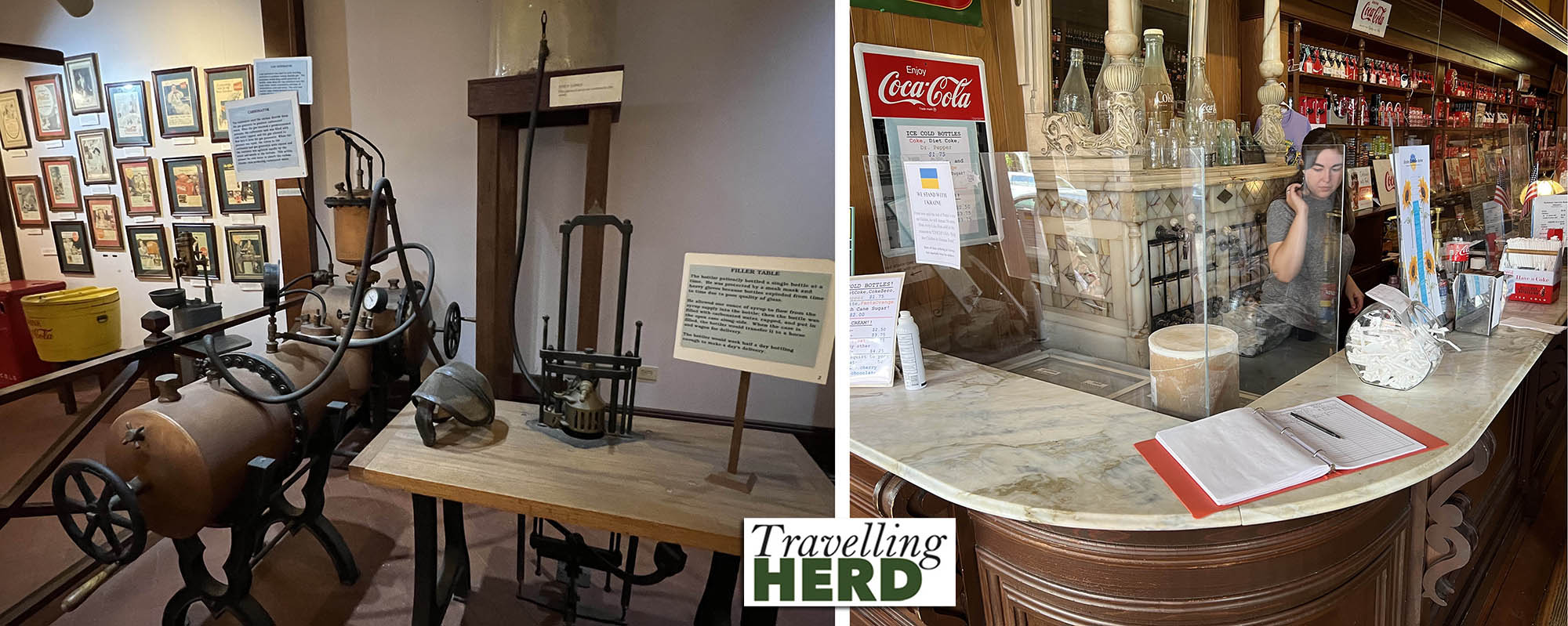
There was a plethora of Coca-Cola merchandise and memorabilia, much of it displayed in an authentic sweet shop/soda fountain setting. Unfortunately the marble soda fountain [seen in the photo above right] was no longer functional.
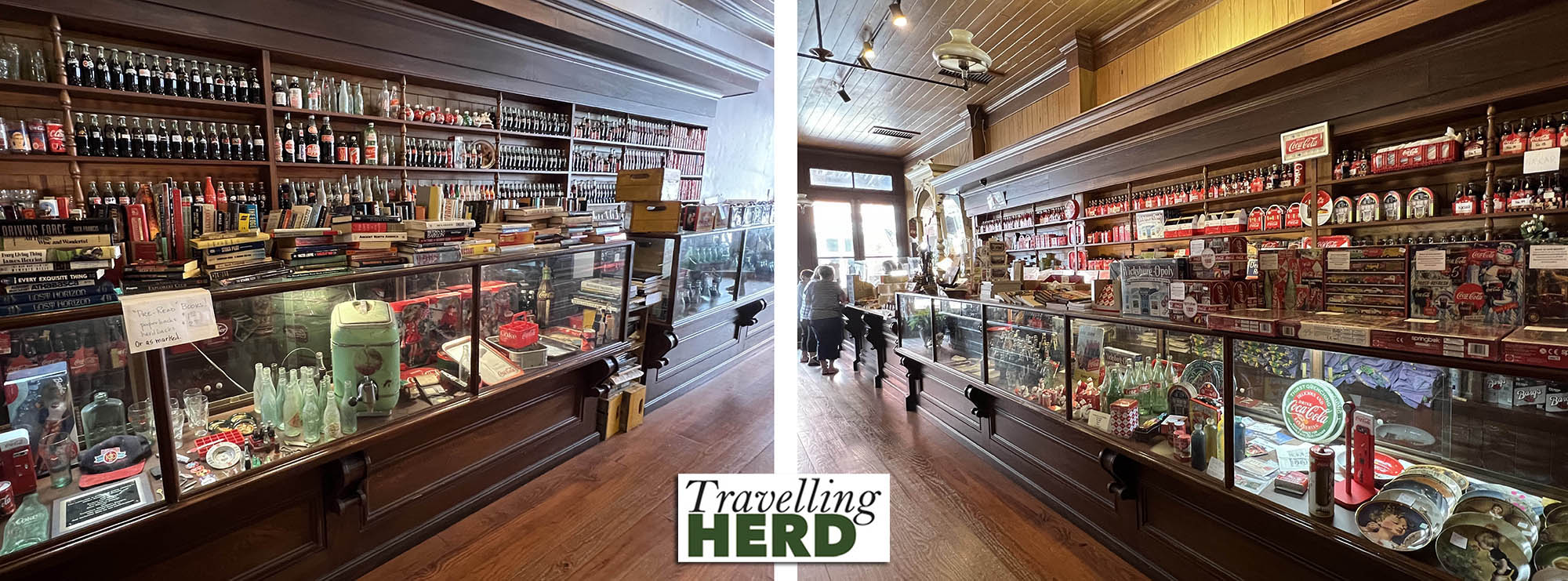
From here we walked to the Vicksburg Civil War Museum, privately owned by Mr Charles Pendelton, which covers the years before its outbreak as well as the Reconstruction which followed. This museum has only relatively recently opened and we could well imagine that Mrs Pendeleton would not wish to find space for all these exhibits at home.
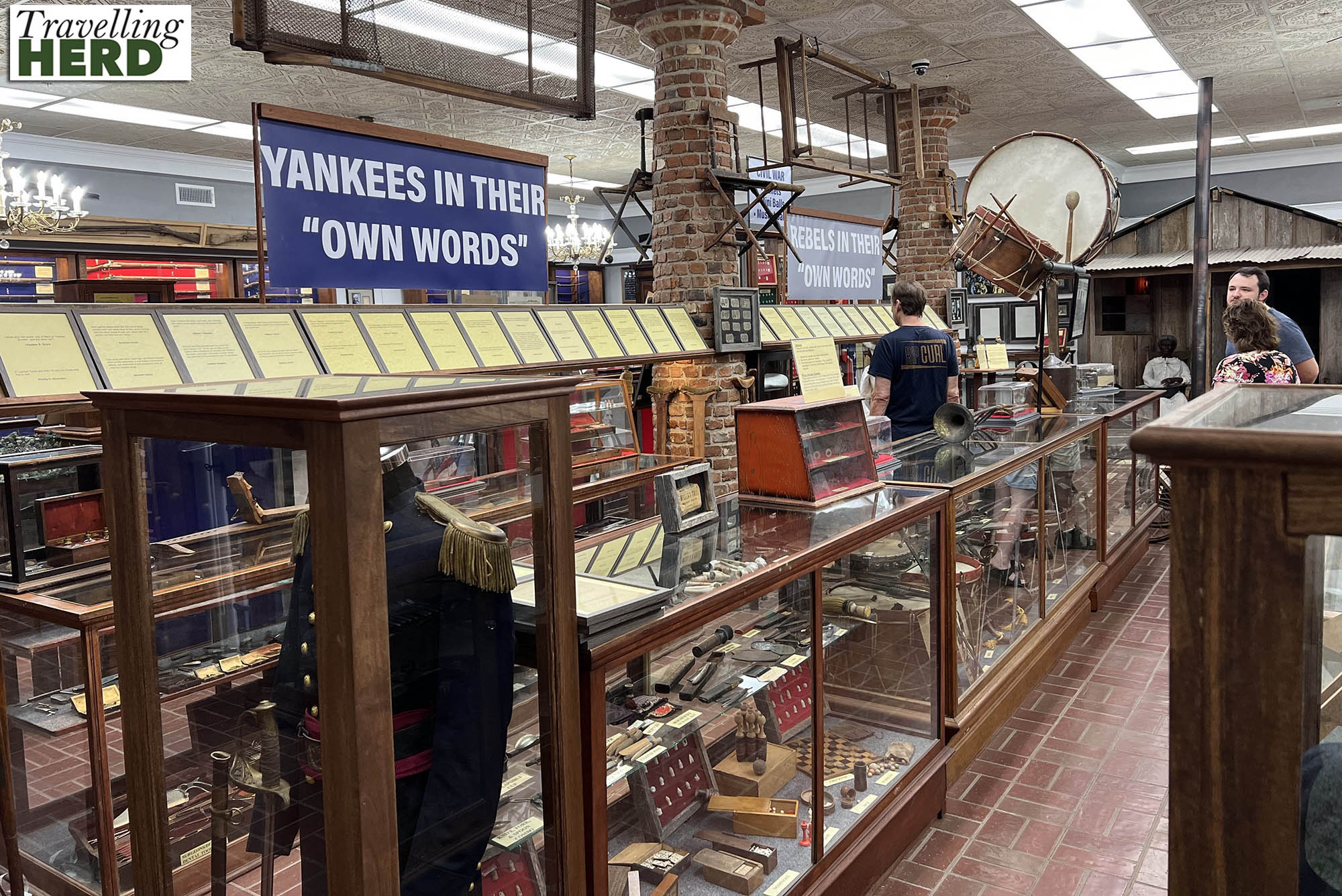
It was noticeable that the cotton plantation owner’s account of Lincoln’s Emancipation Proclamation which we had heard the previous day was rather more positive than that given by Mr Pendleton, the African American owner of the museum. We were particularly horrified by the exhibit explaining ‘slave breeding farms’ which states such as Virginia and Maryland in particular operated after the Act Prohibiting the Importation of Slaves came into effect on 1st January 1808.
From here we walked to the historic Court House. Construction began in 1858 and it was completed in just two years. It survived Union shelling and a tornado in 1953 and was superseded by a new Civic Art Deco style Court House across the street in the mid 1940s and is now the Old Court House Museum.
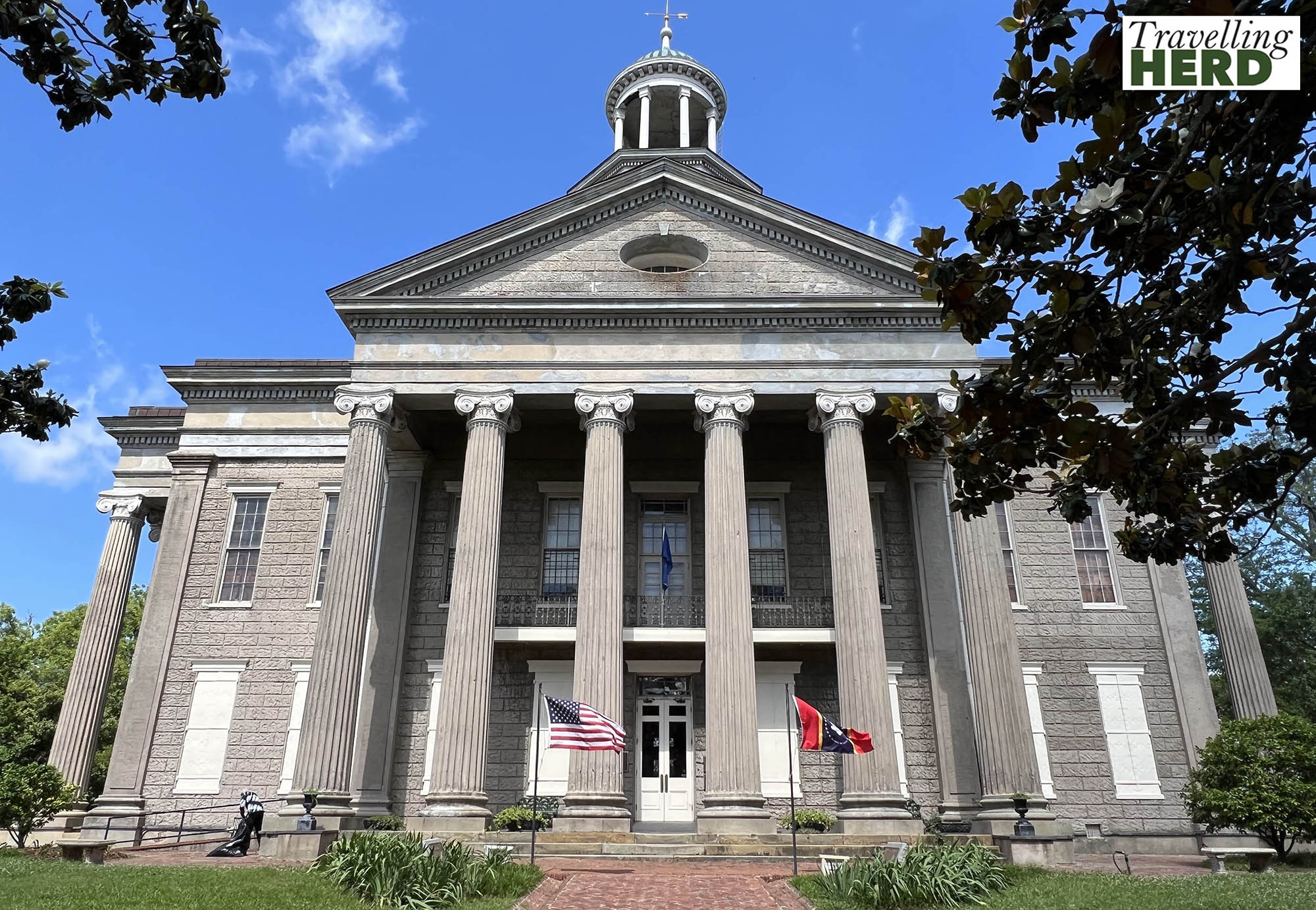
Inside, upstairs, you can visit the original court room.
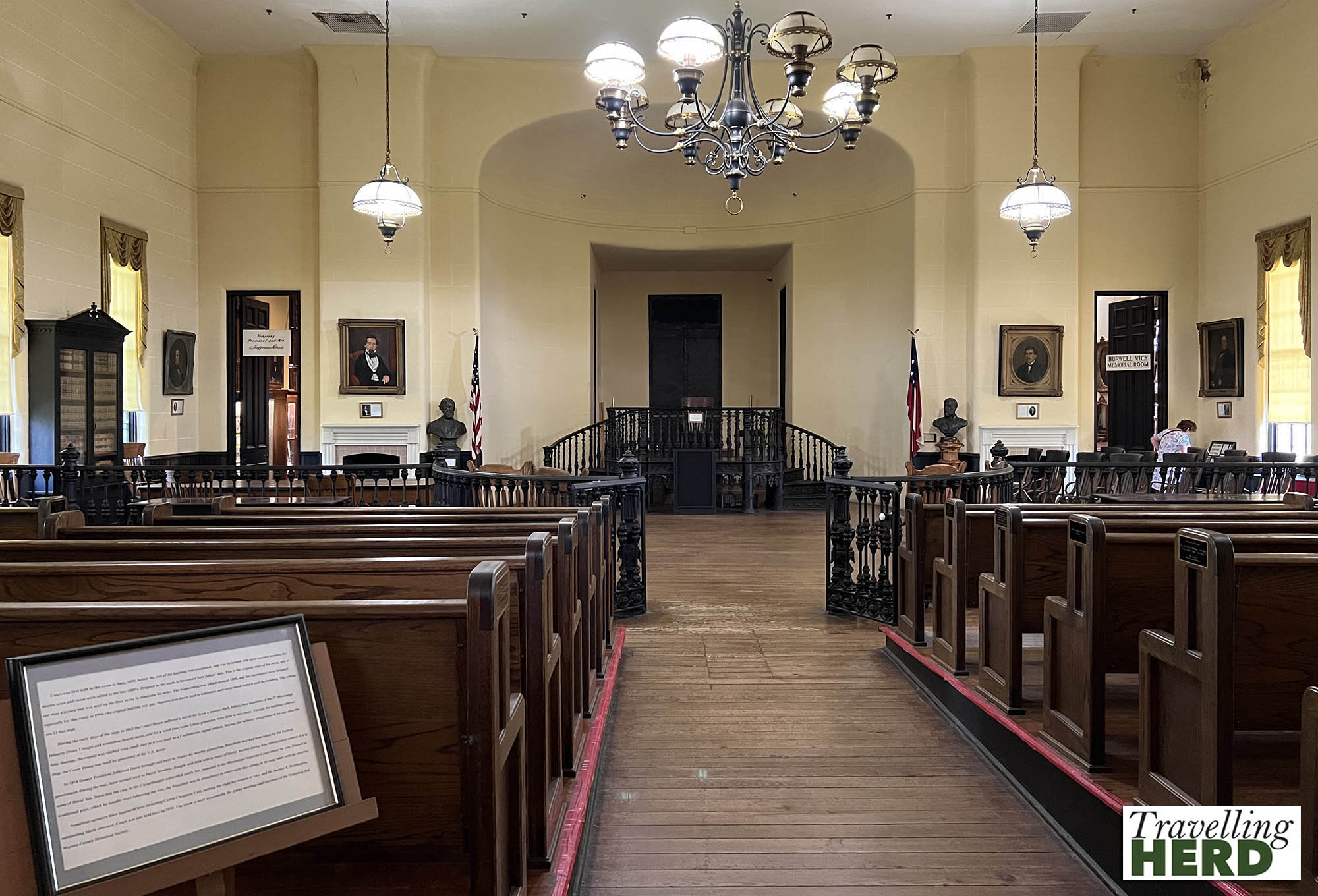
The museum exhibits comprise the largest collection of artefacts relating to Vicksburg’s history, including a section dedicated to Jefferson Davis who was the first and only President of the Confederate states of America between 1861 and 1865.
Ash is Matilda’s favourite museum exhibit ever. She suspects that Ash always sits above the light on this cabinet for the warmth and that the curators do not need to move the label.
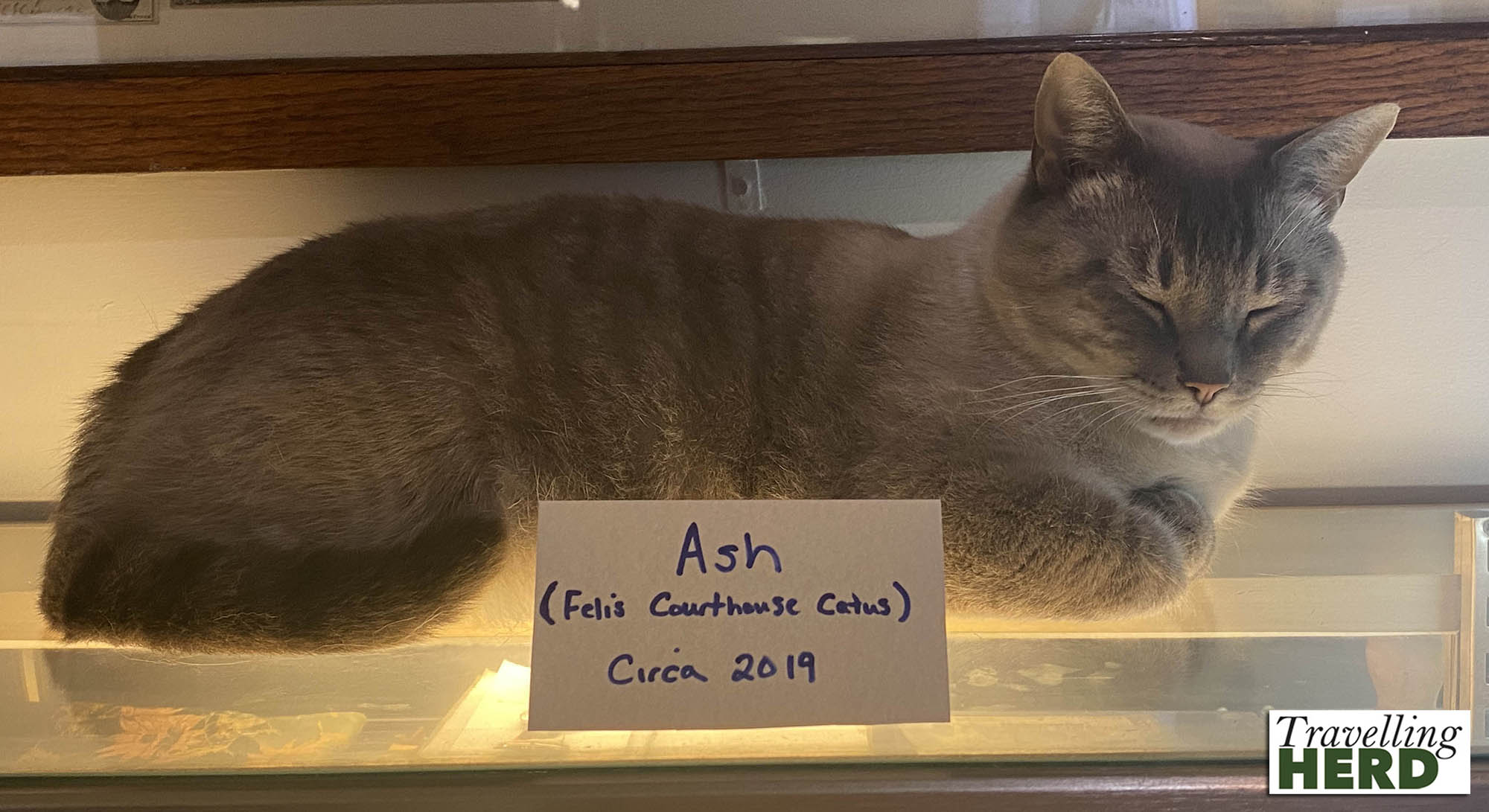
From here we went to the Church of the Holy Trinity. The stained glass windows were funded as memorials and each one bears the name of someone.
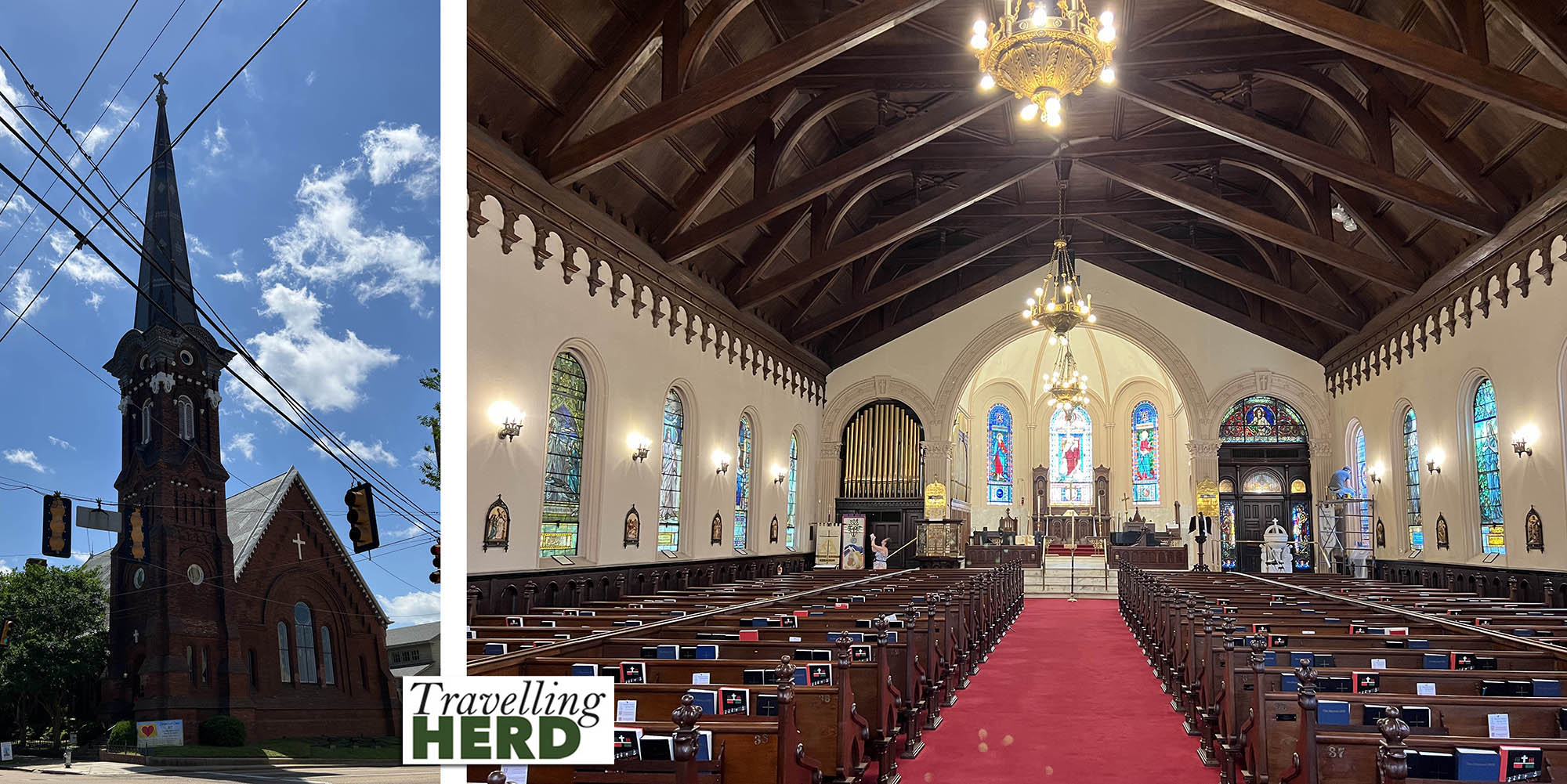
Six of the windows were produced by Tiffany Studios in New York under the supervision of Louis Comfort Tiffany. Unfortunately, due to an oversight, only five of these six windows were photographed. They were truly beautiful. Usually stained glass has the colour applied over the top of clear glass but the Tiffany windows have colour and texture within the glass.
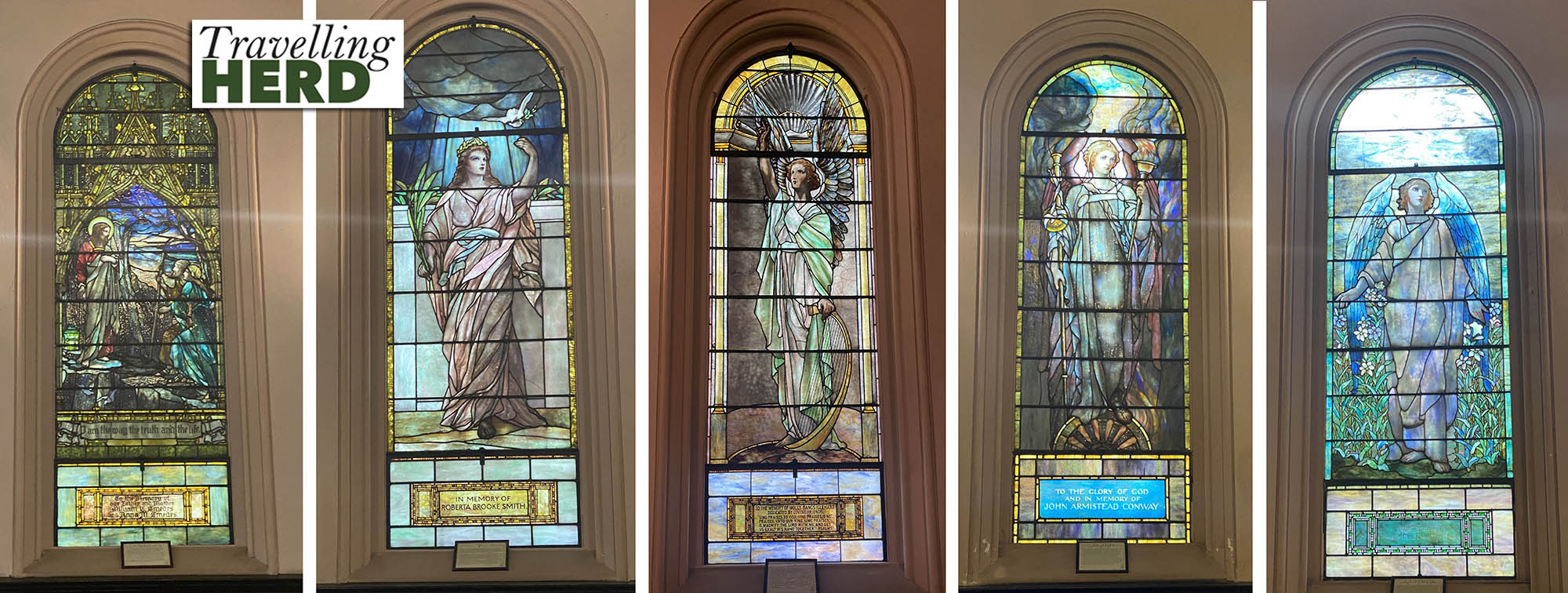
Back on the boat the visual effects as the sun set were quite extraordinary. Robert had a Monty Python moment.

As the sun dropped below the clouds the Mississippi River reflected the colour.
There came a point when the sun and its reflection seemed to have been painted on the sky and the water below. Robert has significant image retouching skills but this is an entirely natural phenomenon.

After sunset, Matilda found it mesmerising watching the paddles turn through the circular windows in the Engine Room Bar.
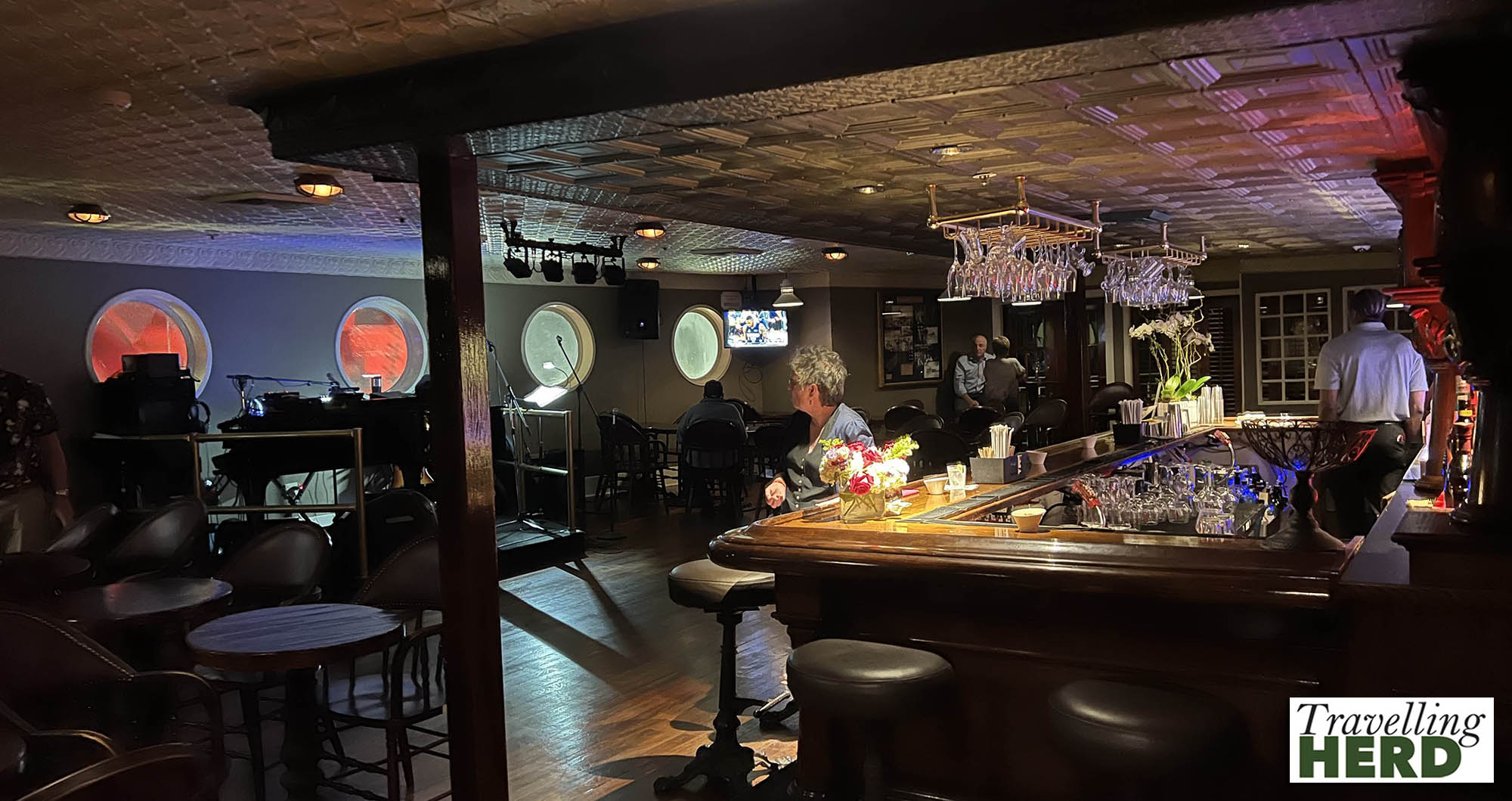
The hop-on hop-off trip the following day was to Greenville.
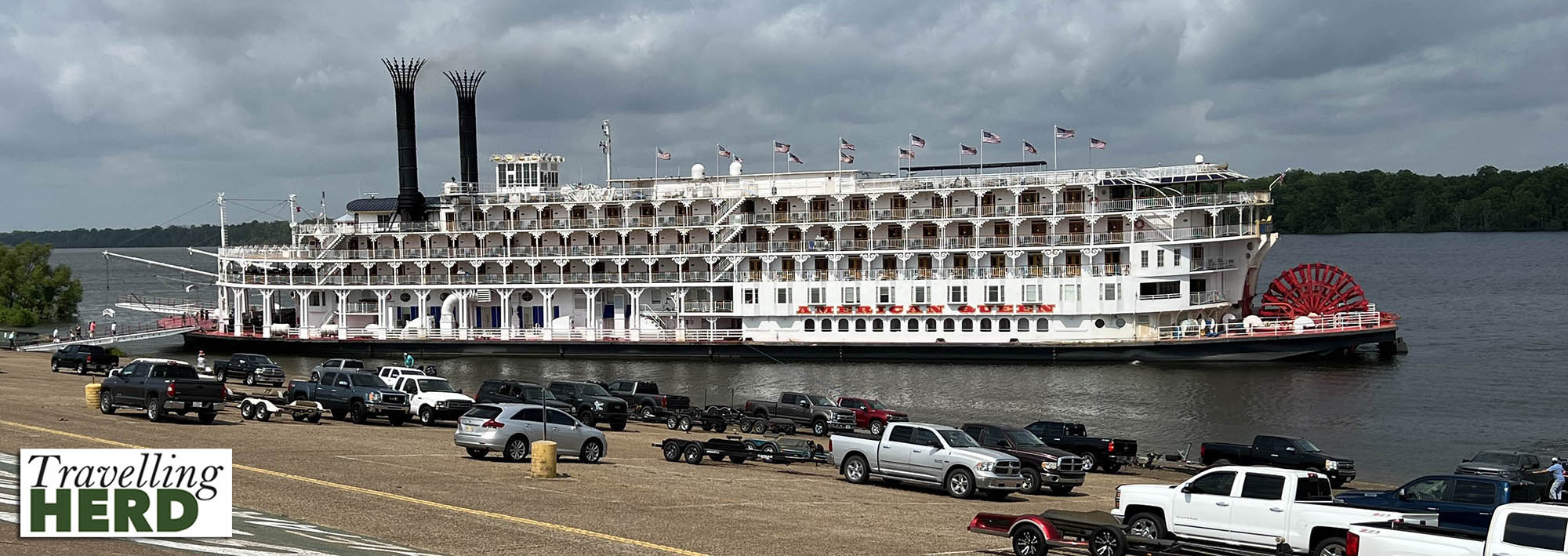
Greenville has a number of claims to fame but the one we most related to was the fact that Jim Henson, master puppeteer, and creator of the Muppets was born here. Greenville claims to be the birthplace of his most famous creation, Kermit the Frog.
The streets were almost deserted and many of the commercial properties were empty. It was hard to imagine that Greenville once had a reputation as the most cosmopolitan and open-minded city in the state of Mississippi.
The Hebrew Union Temple is the Jewish centre for the Mississippi Delta. The guide was both welcoming and knowledgeable. As well as a full sized pipe organ and original stained glass windows it has a large collection of Torah.
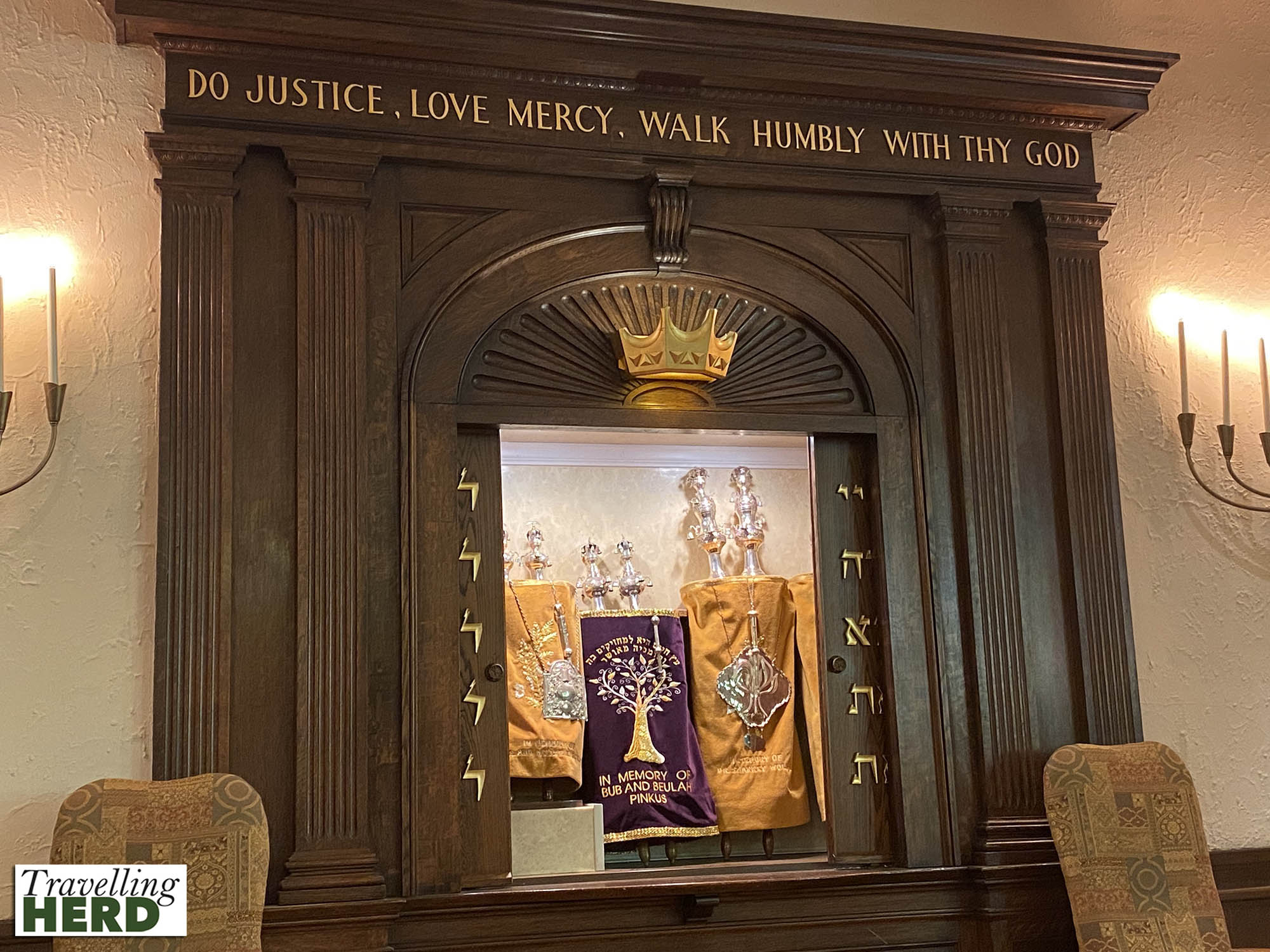
Back aboard the American Queen Matilda watched from our balcony as the bow thrusters were operated from way up high on the boat.
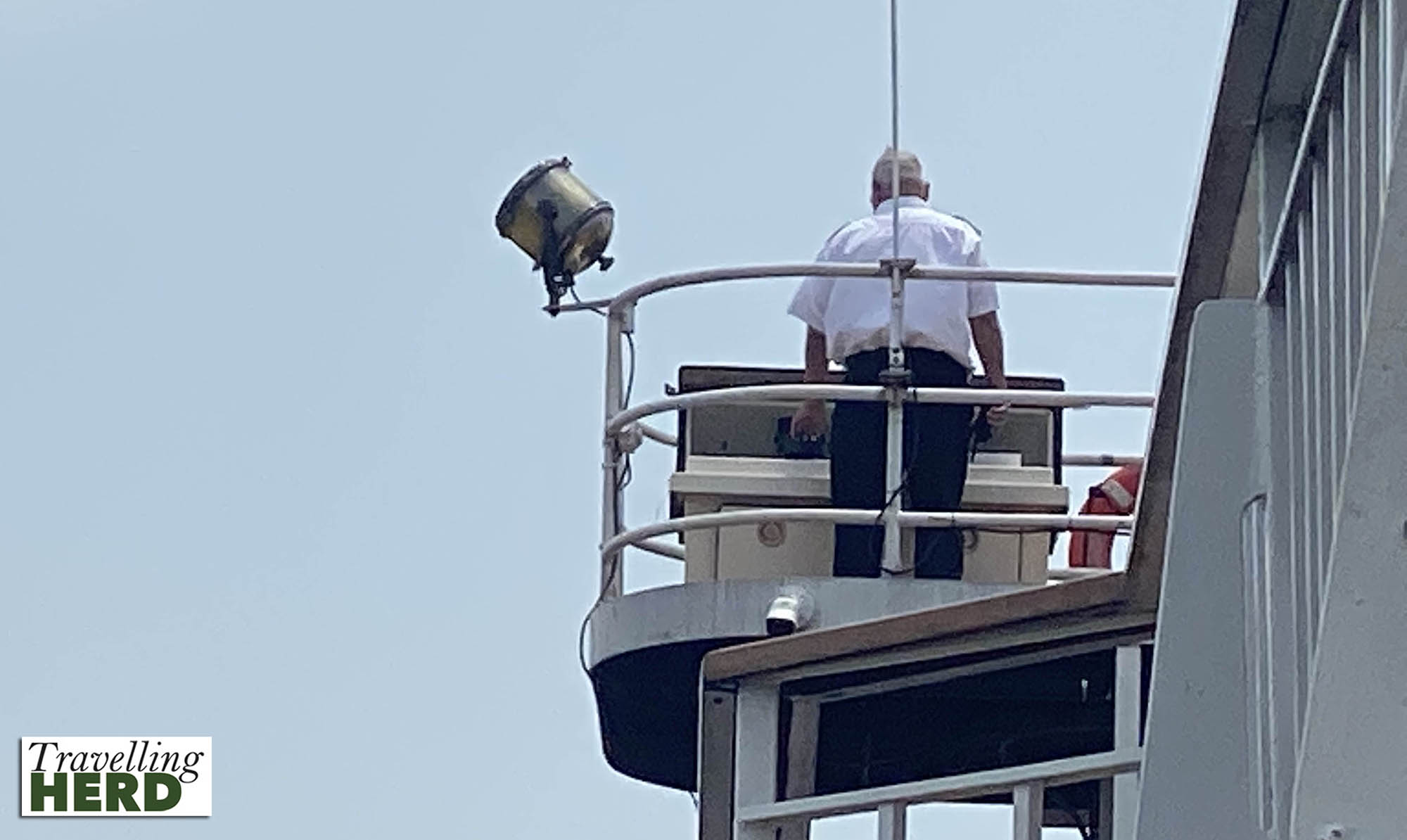
These make it easier to move away from the river bank.
Robert, meanwhile, was listening to the accompaniment of the steam pipe organ at the stern of the boat as we set off.
We had one full day of cruising without any stops to reach our final destination.
After a while, Matilda felt she had spent far too much time being sedentary and decided to go for a walk. Signs confirm that six turns around the deck constitute a mile. She saw a few people walking in the opposite direction and overtook a few more but walked over five miles.
On the last day the temperatures dropped from 34 degrees to 16 degrees as a cold front hit a warm one marking the beginning of the hurricane season in the south. This was accompanied by rain and flood warnings and the rocking chairs seemed to have invisible occupants as the wind rose while Matilda completed her laps.
We had unfortunately been unable to book onto any of the Pilot House Tours but were able to go to the Engine Room Viewing Area.
The information sheet informed us that a four-cyclinder, horizontally-inclined, tandem-piston, steeple compounded, double-acting reciprocating steam engine drives the stern wheel.
Robert was in his element.
The engine on the American Queen was salvaged from the U.S. Army Corps of Engineers’ dredge Kennedy.
Matilda was interested to learn that ‘steam at 300 pounds per square inch is generated by the combustion of #2 marine fuel in a single Babcock and Wilcox’. Not because she understands precisely what this means but because her mother worked for Babcock and Wilcox in the UK when she was a child.
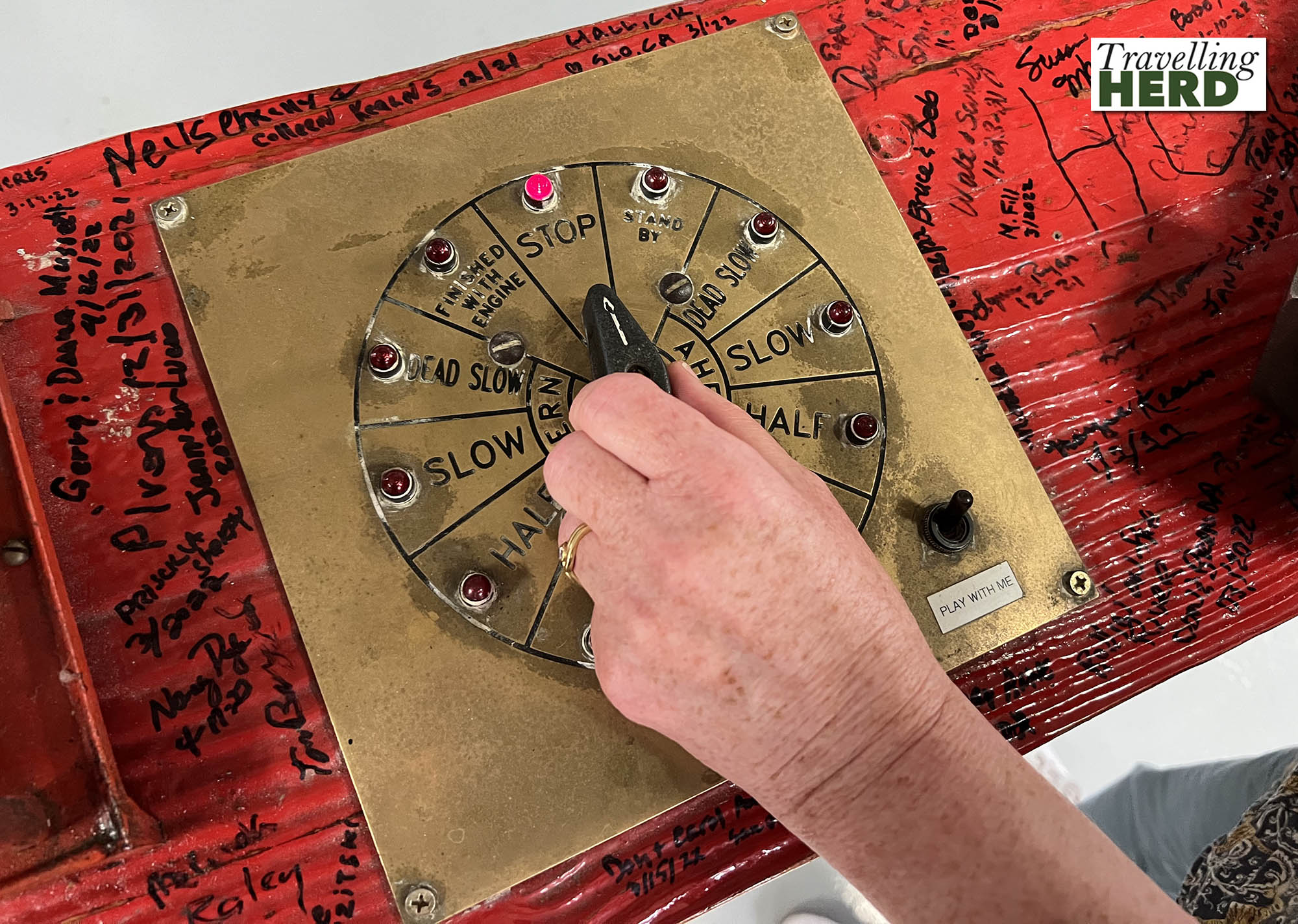
The company had obviously tried to seat people in the dining room with fellow spirits. In our case this turned out to be the lovely John and Debbie from Barnsley. We ate elsewhere on the first night but when we joined them on the second night the table was set for six. The following night we noticed that there was only one extra place setting and then eventually it became a table for four. We wondered whether we should have been sharing with the poor woman who had broken her leg on her bicycling excursion on the first day.
We celebrated our last evening on the American Queen together in the Engine Room Bar. We would be disembarking in Memphis in the morning.
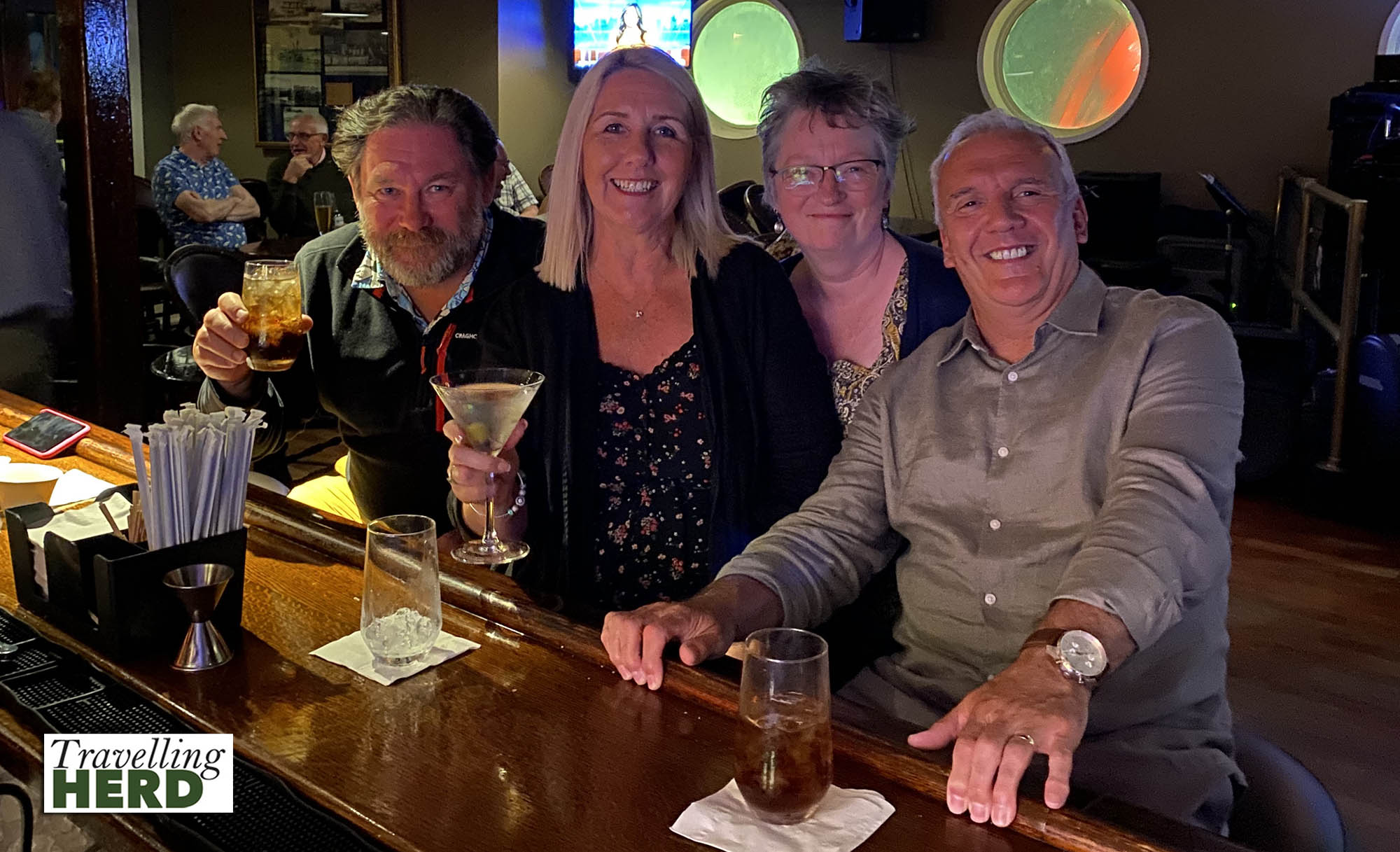
In all, we had travelled 736 miles from New Orleans to Memphis along the Mississippi, on the American Queen.
Video of the day:
Selfie of the day:
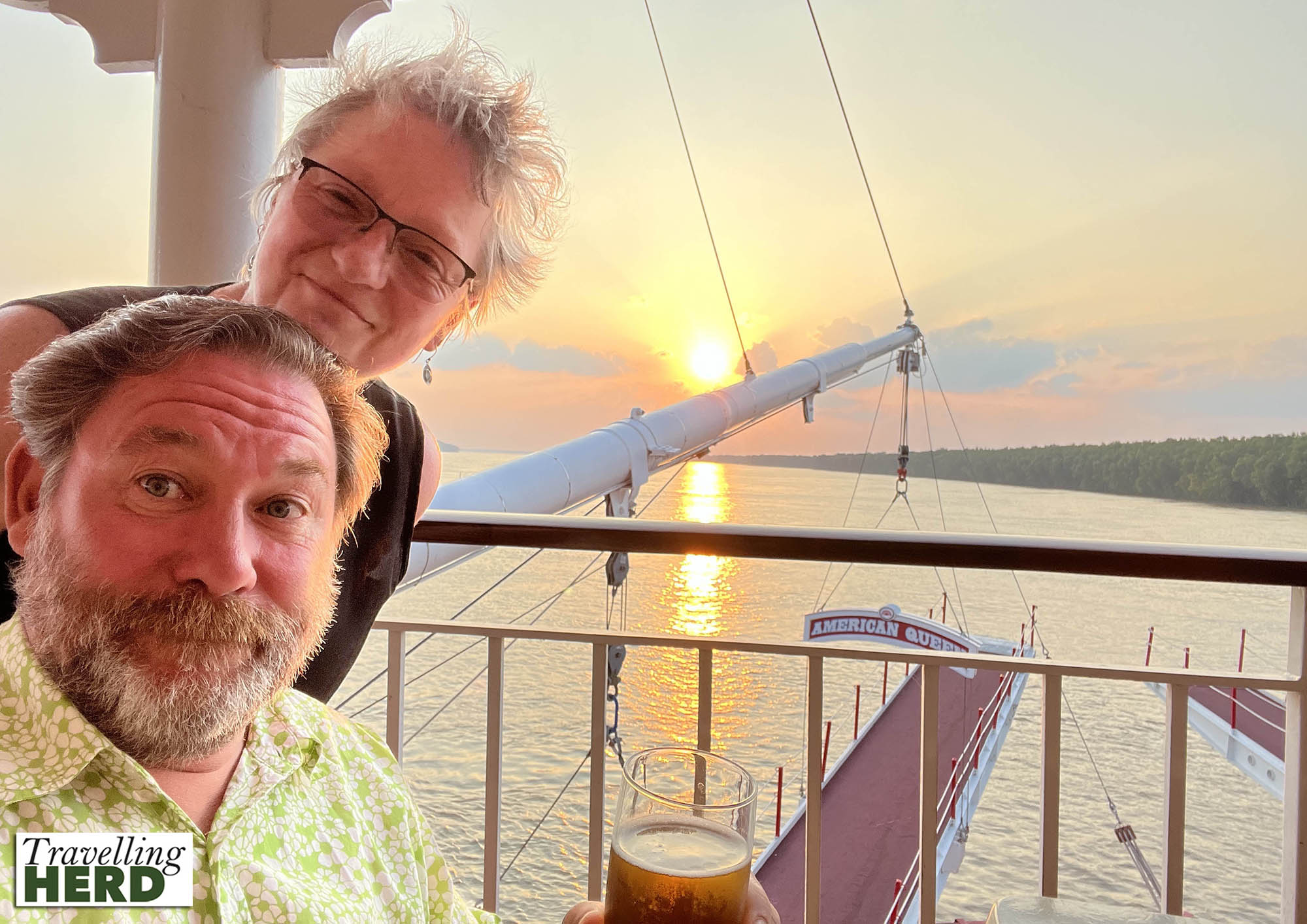
Dish of the day:

Route Map:
